Abstract
A three-year prospective study involving 244 calves was undertaken on a California dairy to evaluate the protective role of colostral antibodies against bovine leukemia virus (BLV) infection in calves. Calves were followed from birth to the time they left their individual hutch (TLIH), at about 90 days of age. The probability of being infected at TLIH and the daily risk of infection between birth and TLIH were modelled using the logistic and the Cox models, respectively. Calves with no detectable antibodies during the first week of life were up to 2.00 and 2.75 times more likely to be infected at TLIH compared to calves with low and high concentrations of antibodies during the first week of life, respectively (p = 0.01). When the daily risk was modelled, calves without antibodies at the estimated day of infection were up to 3.4 and 11.6 times more likely to become infected than calves with low and high concentrations of antibodies on that day, respectively (p less than 0.001). Results indicated that calfhood infection may be reduced by about 45% through the feeding of colostrum with BLV antibodies. Further reduction in infection may be possible by feeding calves milk powder, milk replacer, and/or milk from noninfected cows. Results also indicated that quantification of the effect of a time-dependent risk factor, such as colostral antibody concentration, might be affected if treated as a fixed factor.
Full text
PDF
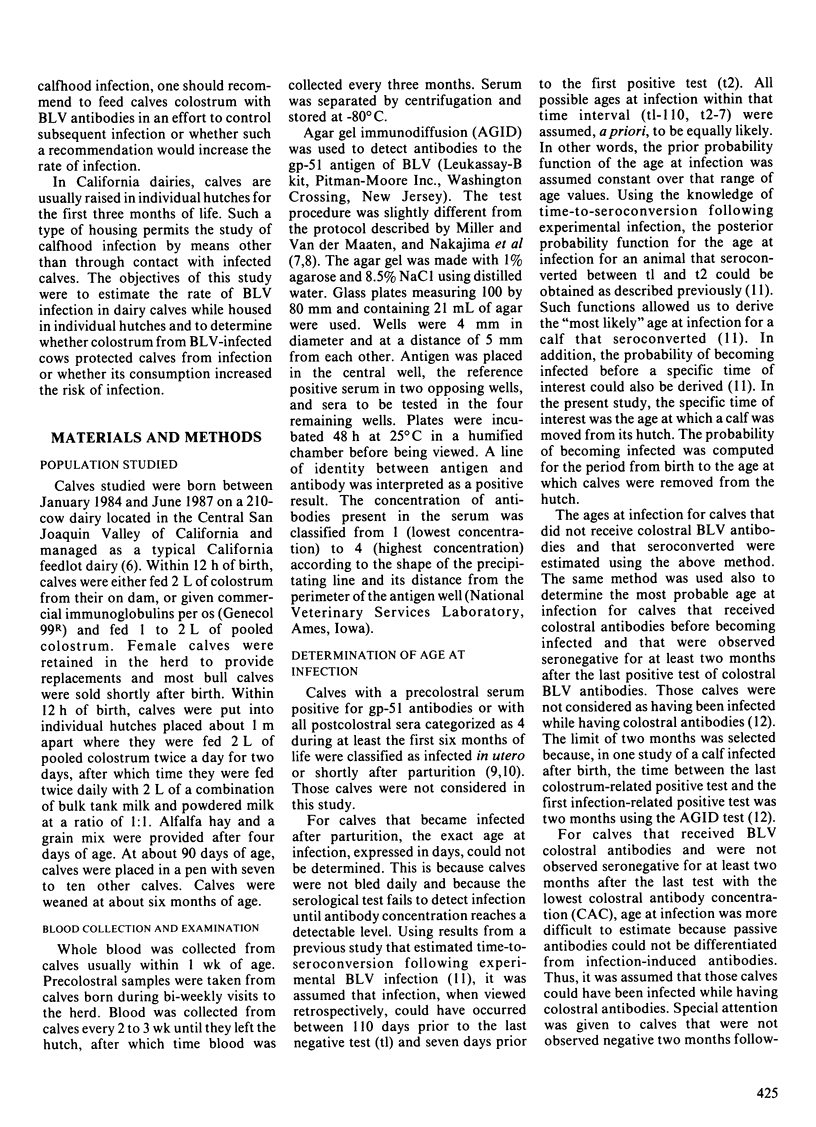
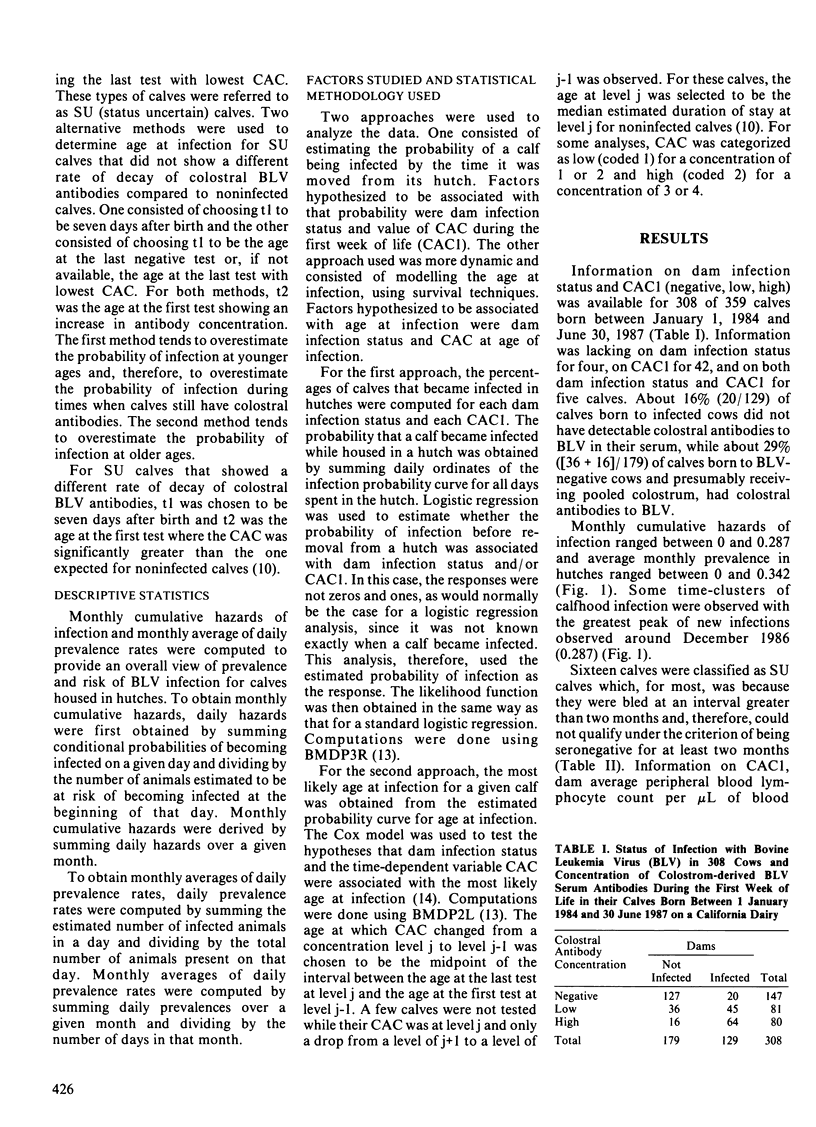
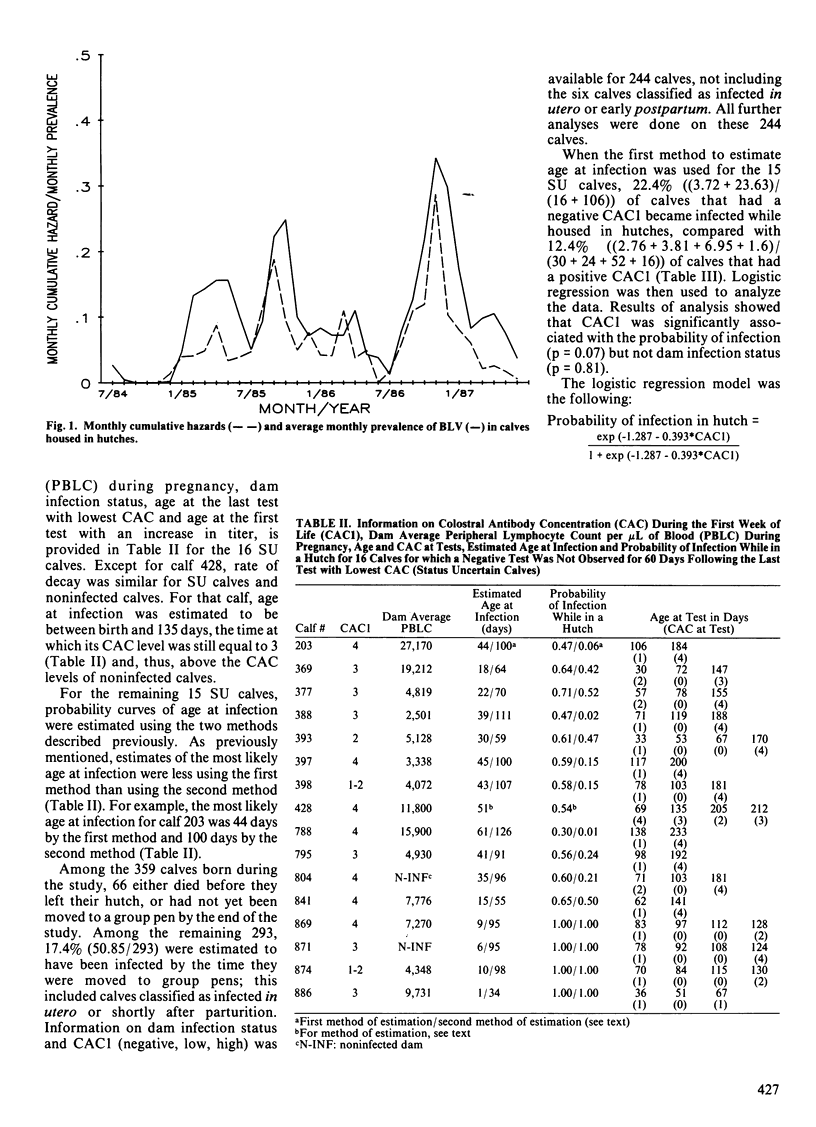
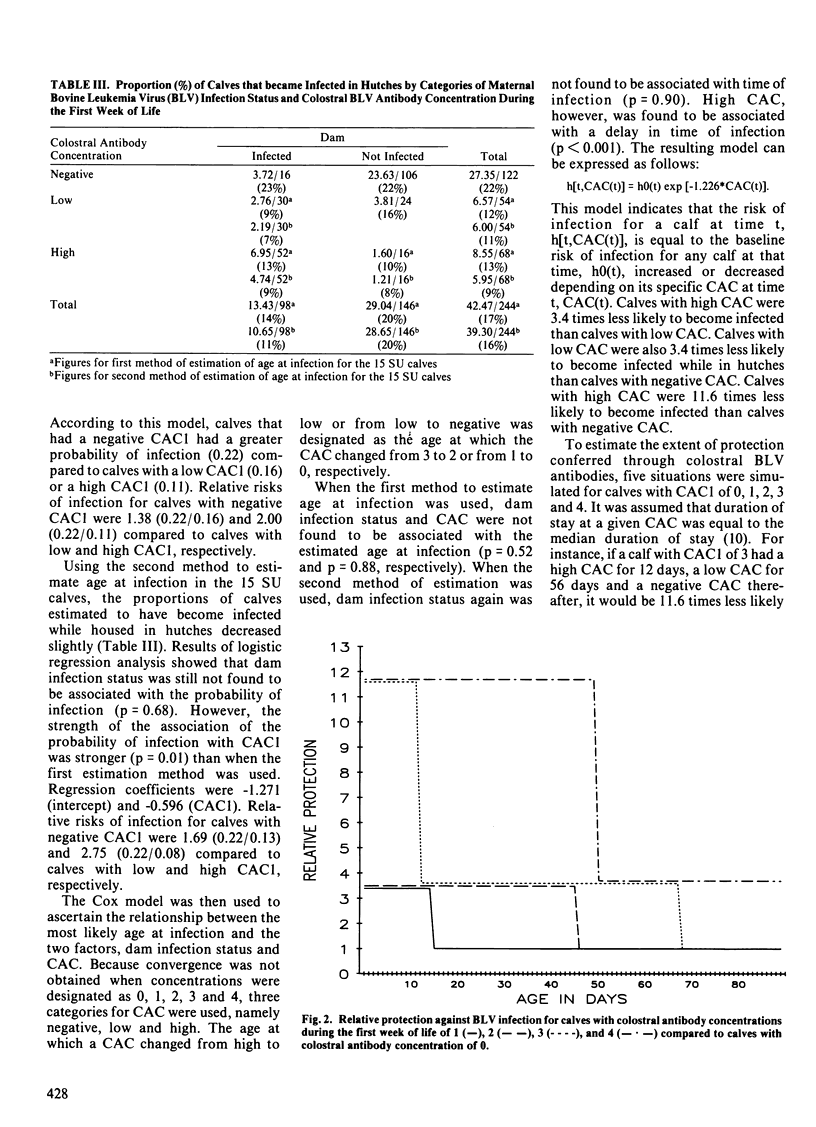

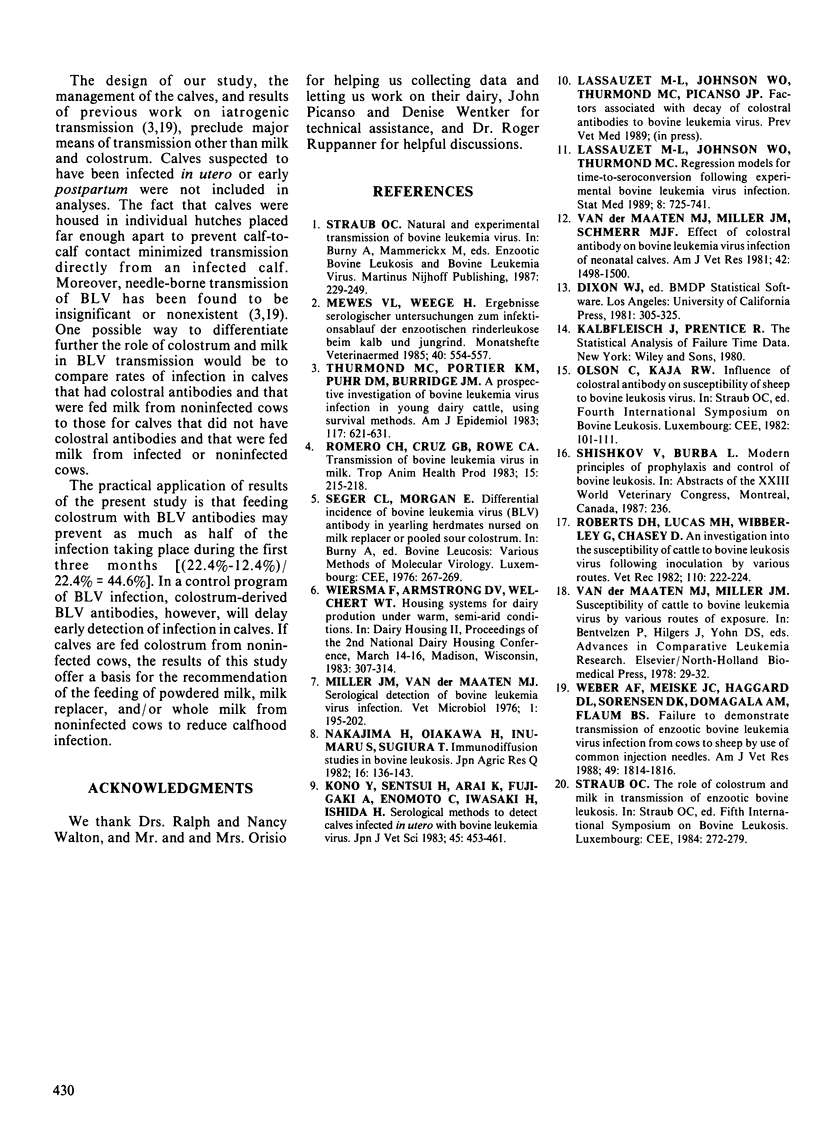
Selected References
These references are in PubMed. This may not be the complete list of references from this article.
- Lassauzet M. L., Johnson W. O., Thurmond M. C. Regression models for time to seroconversion following experimental bovine leukaemia virus infection. Stat Med. 1989 Jun;8(6):725–741. doi: 10.1002/sim.4780080610. [DOI] [PubMed] [Google Scholar]
- Roberts D. H., Lucas M. H., Wibberley G., Chasey D. An investigation into the susceptibility of cattle to bovine leukosis virus following inoculation by various routes. Vet Rec. 1982 Mar 6;110(10):222–224. doi: 10.1136/vr.110.10.222. [DOI] [PubMed] [Google Scholar]
- Romero C. H., Cruz G. B., Rowe C. A. Transmission of bovine leukaemia virus in milk. Trop Anim Health Prod. 1983 Nov;15(4):215–218. doi: 10.1007/BF02242060. [DOI] [PubMed] [Google Scholar]
- Thurmond M. C., Portier K. M., Puhr D. M., Burridge M. J. A prospective investigation of bovine leukemia virus infection in young dairy cattle, using survival methods. Am J Epidemiol. 1983 May;117(5):621–631. doi: 10.1093/oxfordjournals.aje.a113585. [DOI] [PubMed] [Google Scholar]
- Van Der Maaten M. J., Miller J. M., Schmerr M. J. Effect of colostral antibody on bovine leukemia virus infection of neonatal calves. Am J Vet Res. 1981 Sep;42(9):1498–1500. [PubMed] [Google Scholar]
- Weber A. F., Meiske J. C., Haggard D. L., Sorensen D. K., Domagala A. M., Flaum A. M. Failure to demonstrate transmission of enzootic bovine leukemia virus infection from cows to sheep by use of common injection needles. Am J Vet Res. 1988 Nov;49(11):1814–1816. [PubMed] [Google Scholar]


